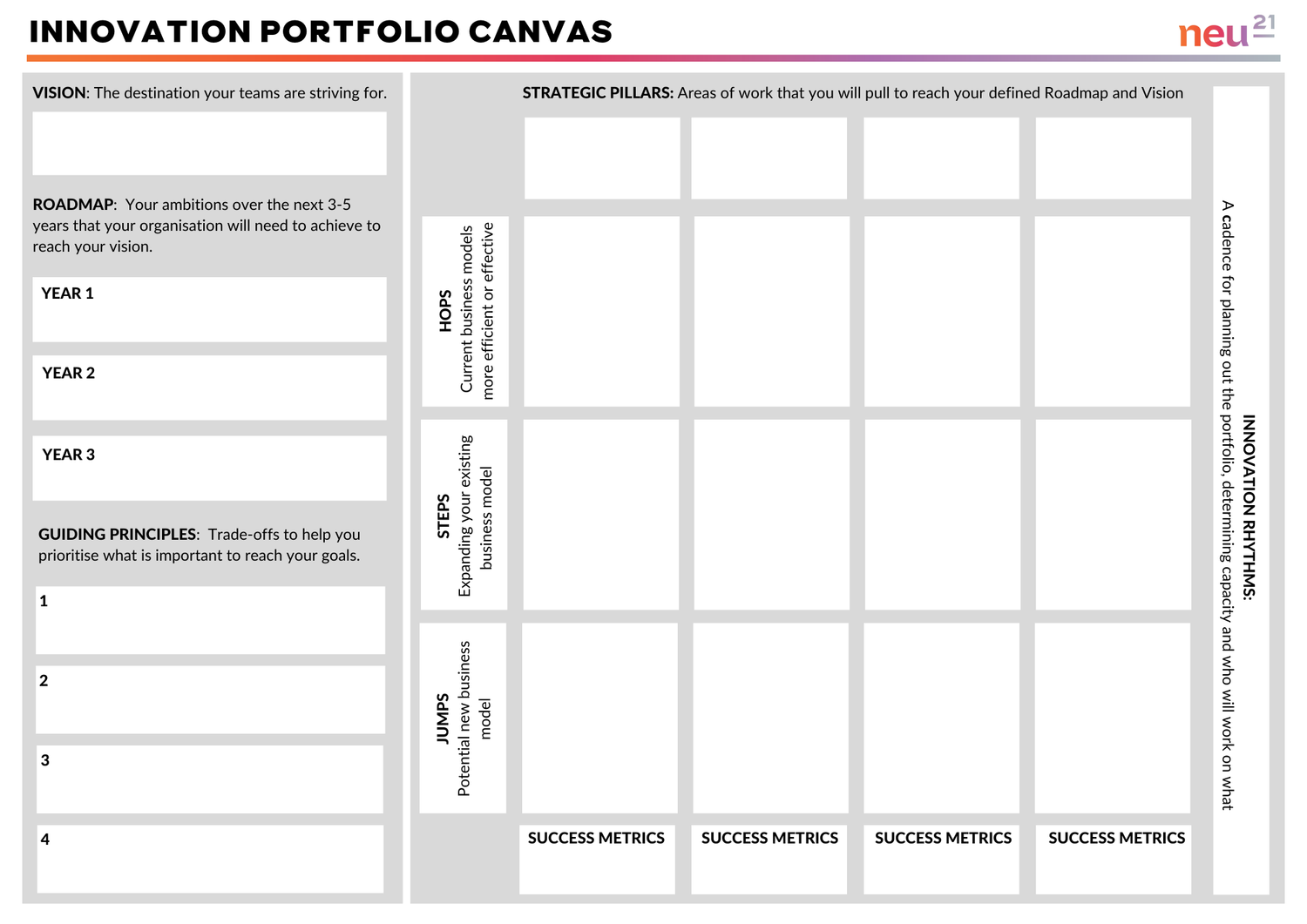Why you Need an Innovation Portfolio and How to get Started
Arnold Ho
If you are looking for an innovation portfolio, you are facing the issue of your teams not innovating.
Chances are they have been tasked to innovate but they are saying things like they can’t because they don’t have the time because of BAU. Or it feels like your teams are reacting to the changes in the environment rather than proactively responding or pre-empting changes. Another issue is that the work is focused on the here and now rather than the future. If these are the issues you face, then an innovation portfolio can certainly help.
So Tell Me, What is an Innovation Portfolio?
An innovation portfolio is a set of initiatives structured in a way that will help your teams reach their strategic goals focused on the here and now, the near future and beyond, with the outcome being innovation across these 3 horizons.
If this sounds like what you’re here for, then what makes up an innovation portfolio?
Every innovation portfolio may look different for every team, but from my experience, it consists of the following parts:
Vision – This is the north star, the destination your teams are striving for.
Roadmap 3-5 years – These are your ambitions over the next 3-5 years that your organisation will need to achieve to reach your vision. This isn’t the work that you’ll be doing but the clear goals you are wanting to achieve at each year.
Guiding Principles – This involves articulating what your key principles you adhere to, often these are phrased as trade-offs to help you prioritise what is important to reach your goals.
Strategic Pillars – Now we are getting more specific about the areas of work or the levers that you will pull to reach your defined Roadmap and Vision. These are usually written as where you need to win so that there is more clarity on what you need to work on.
The Hops, Steps, and Jumps – these are the initiatives that you will be working on within a defined period. My recommendation is to look at this quarterly to adapt to the changes in the environment. I define these as hops, steps, and jumps to articulate the types of work these initiatives will focus on. Let me explain:
Hops: These are the initiatives that will help your existing business model, making what you currently do more efficient or effective
Steps: These are the initiatives where you begin looking at expanding your existing business model through expansion or new products.
Jumps: These are the crazy initiatives that likely fail but are the potential new business models
Why we articulate this is so that we are clear on the goal of each of these, as you move from hops to jumps, the likelihood of failure is higher because it is more unknown. Therefore, you do not want to measure success in the same way for these initiatives. For jumps and some steps, it is about how quickly you gather data to kiss or kill the idea, and for hops and some steps, you may want to measure these through their impact.
Innovation Portfolio Operating Structure:
Rhythm: having a cadence for planning out the portfolio, determining capacity and who will work on what
Kiss or Kill: deciding what the outcome is for each of these initiatives, whether you invest in it, pivot, or kill the idea
Communication - a mechanism to share the innovation portfolios progress to the business, we highly recommend using some visual management tool to streamline this process and have one source of truth.
Reflection - a way for learnings to be gained quickly by the teams.
Great, How do I Start and Innovation Portfolio?
You should begin by looking at the different areas of an innovation portfolio and identify what is missing. From there, begin articulating all these areas with your teams and sharing this thinking. If you would like a template to help, you can download our free Innovation Portfolio template here.
My last recommendation is to not try to design the perfect portfolio because there is not one, it should constantly be evolving as your environment changes, so rather than striving for perfection, aim for progress in your innovation journey with your teams.
